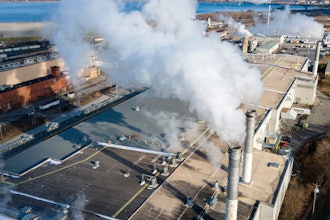
Industrial production declined 0.9 percent in August following six consecutive monthly gains. Hurricane Harvey, which hit the Gulf Coast of Texas in late August, is estimated to have reduced the rate of change in total output by roughly 3/4 percentage point. The index for manufacturing decreased 0.3 percent; storm-related effects appear to have reduced the rate of change in factory output in August about 3/4 percentage point. The manufacturing industries with the largest estimated storm-related effects were petroleum refining, organic chemicals, and plastics materials and resins. The output of mining fell 0.8 percent in August, as Hurricane Harvey temporarily curtailed drilling, servicing, and extraction activity for oil and natural gas. The output of utilities dropped 5.5 percent, as unseasonably mild temperatures, particularly on the East Coast, reduced the demand for air conditioning. At 104.7 percent of its 2012 average, total industrial production in August was 1.5 percent above its year-earlier level. Capacity utilization for the industrial sector decreased 0.8 percentage point in August to 76.1 percent, a rate that is 3.8 percentage points below its long-run (1972–2016) average.
Market Groups
The output of consumer goods moved down 0.7 percent in August. Consumer durables posted an increase of 0.8 percent, but this gain was offset by declines in the indexes for consumer nondurables and consumer energy products, which fell 1.1 percent and 4.8 percent, respectively. The large drop in the output of consumer energy products reflected the weather-related decrease in utilities output as well as the hurricane-related reduction in petroleum refining. The index for business equipment moved down 0.4 percent, as a decline of 1.1 percent in industrial and other equipment was partially offset by gains elsewhere. Construction supplies recorded a decrease of 0.6 percent, and the output of business supplies fell 1.5 percent. The production of materials dropped 1.1 percent. The indexes for energy materials and for nondurable materials each fell nearly 2 percent; although both indexes were reduced as a consequence of Hurricane Harvey, the output of energy materials was also lowered by the cut for utilities. The production of durable materials rose 0.5 percent.
Industry Groups
Manufacturing output decreased 0.3 percent in August. A gain of 0.3 percent for durables was outweighed by decreases of 0.9 percent for both nondurables and other manufacturing (publishing and logging). Among durable manufacturing industries, the largest increase was recorded by motor vehicles and parts, which rose 2.2 percent following a drop of 4.2 percent in July. Other notable gains in durable manufacturing in August came from the indexes for primary metals and for aerospace and miscellaneous transportation equipment, each of which advanced more than 1 percent. The largest contributors to the decline in nondurable manufacturing were the indexes for chemicals and for petroleum and coal products, both of which were held down by factory shutdowns related to Hurricane Harvey.
In August, the index for mining dropped 0.8 percent while the output of utilities fell 5.5 percent. Within mining, all of the major components recorded losses; the largest decrease was for oil and gas well drilling and servicing, which fell for a second month in a row. Even so, the index for mining in August was 9.7 percent above its year-earlier level.
Capacity utilization for manufacturing moved down 0.3 percentage point in August to 75.3 percent, a rate that is 3.1 percentage points below its long-run average. Utilization for durable manufacturing increased 0.2 percentage point to 74.5 percent, while the operating rate for nondurable manufacturing fell 0.7 percentage point to 77.2 percent. The operating rate for mining decreased 0.9 percentage point to 83.9 percent, and the rate for utilities fell 4.3 percentage points to 73.9 percent.






















